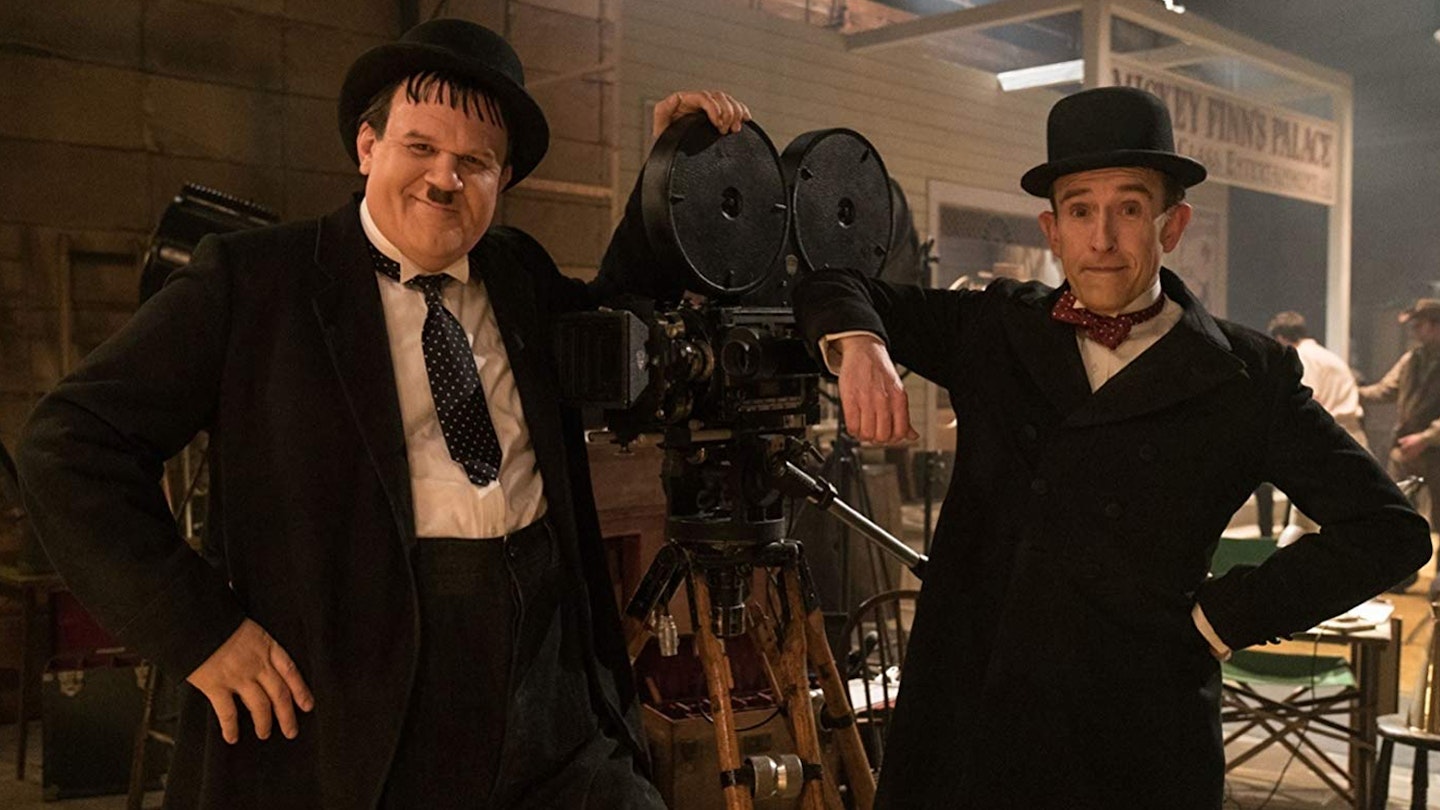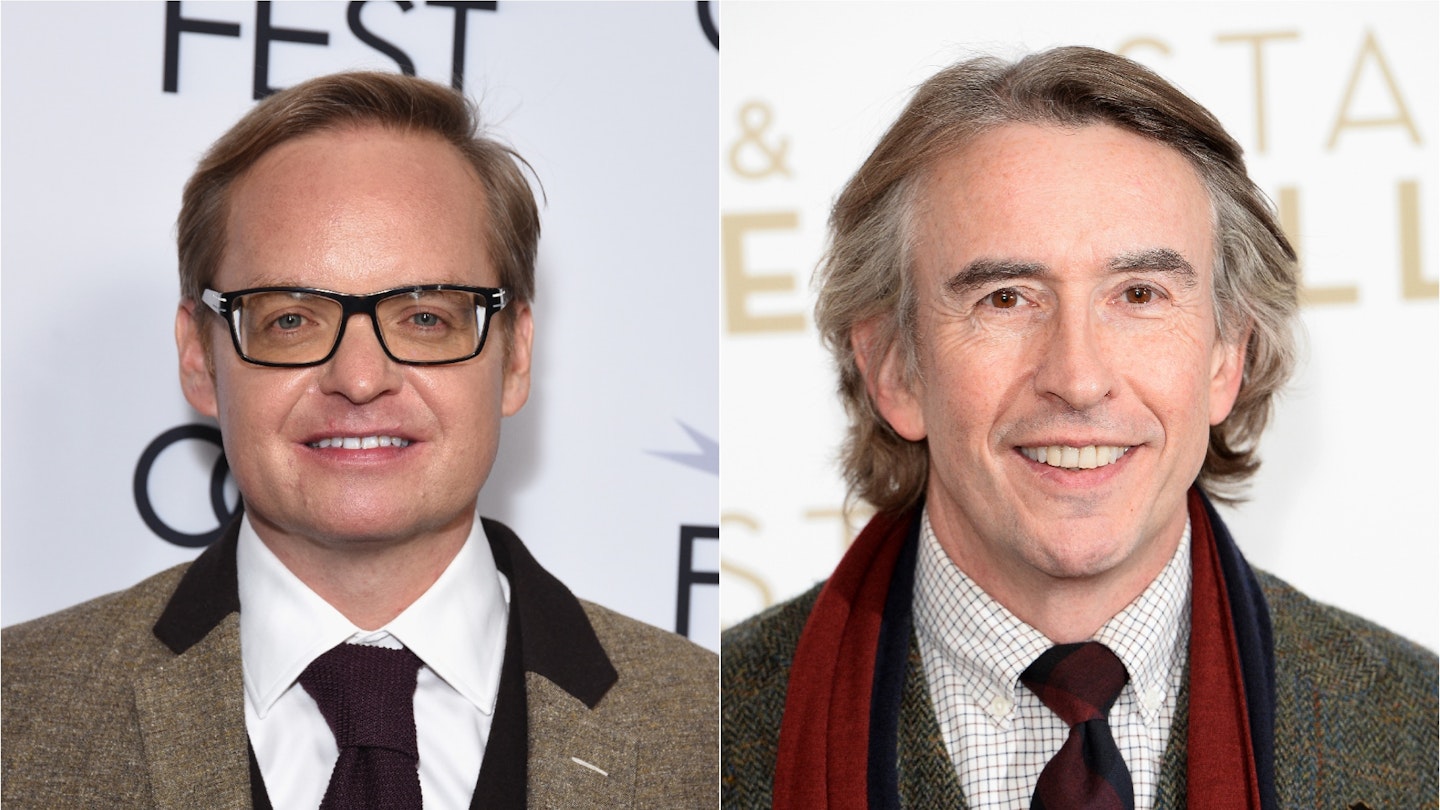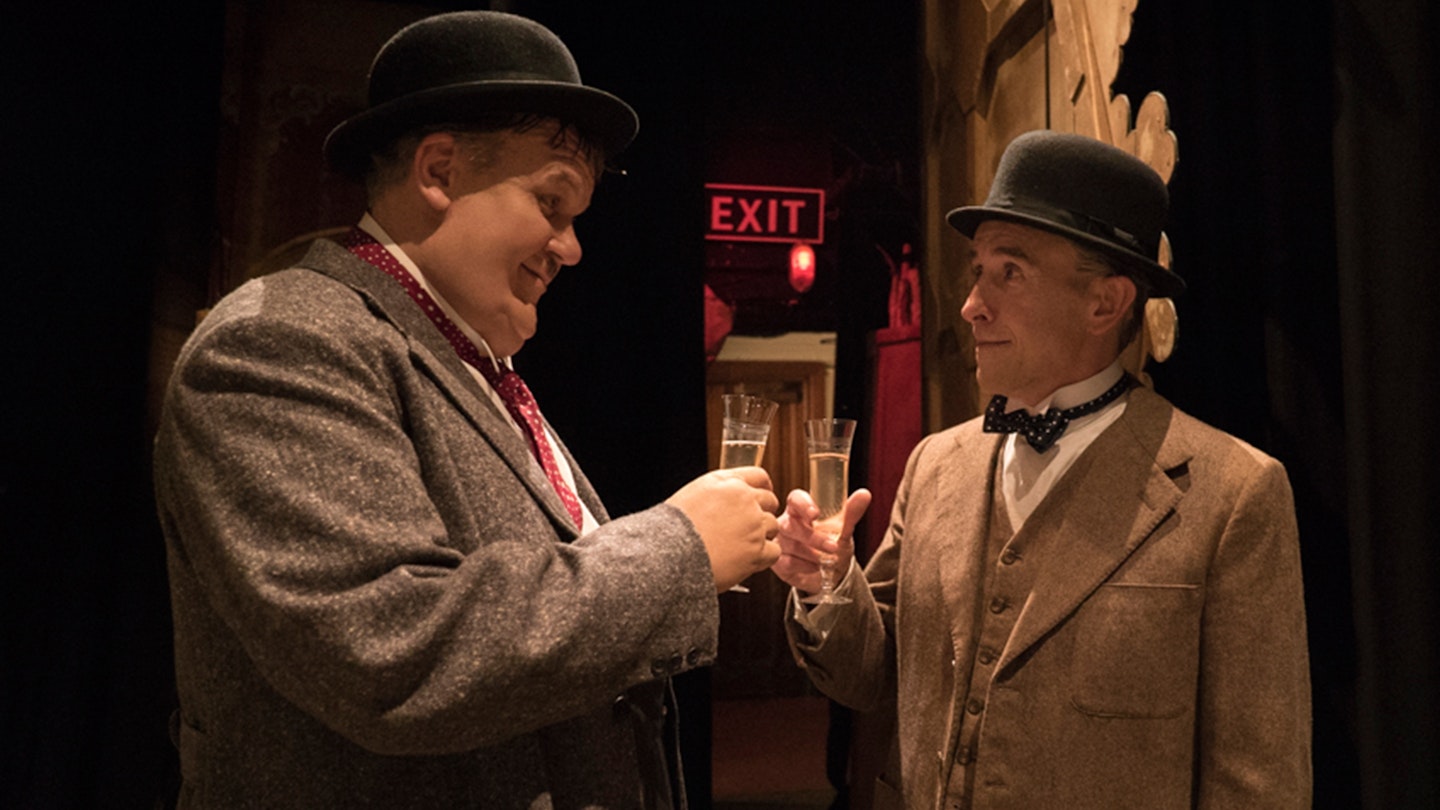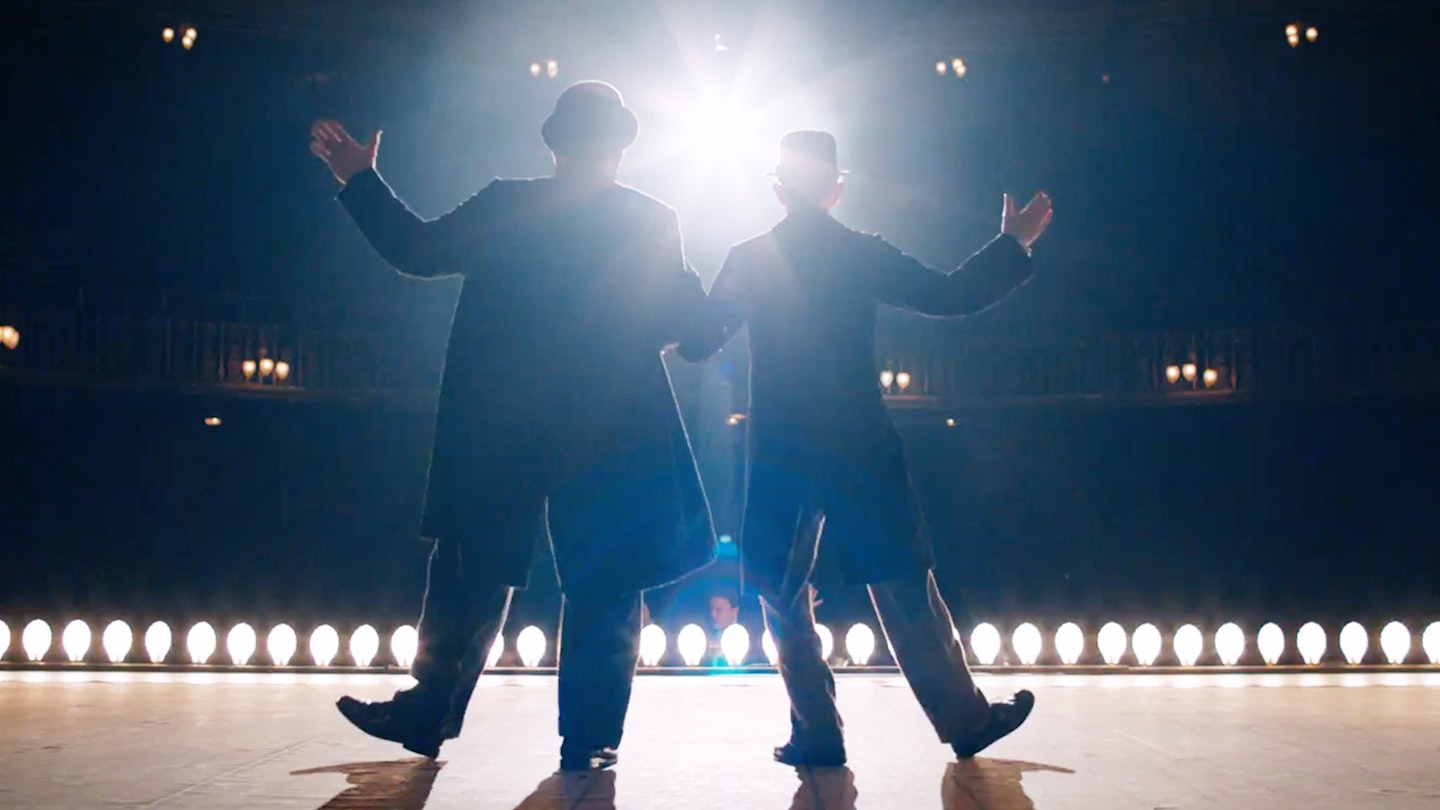Jon S. Baird’s last movie, 2013’s Filth, was a wild fit of directorial excess, throwing rattling editing, disturbing fantasy sequences and cross-dressing animated pigs at a madly sleazy story that demanded more more MORE. One might think he’d gone soft in following up with a biopic of Laurel and Hardy, the most wholesome double-act in cinema history. Instead Baird shows he’s a director who bends himself to the material, not the other way round.
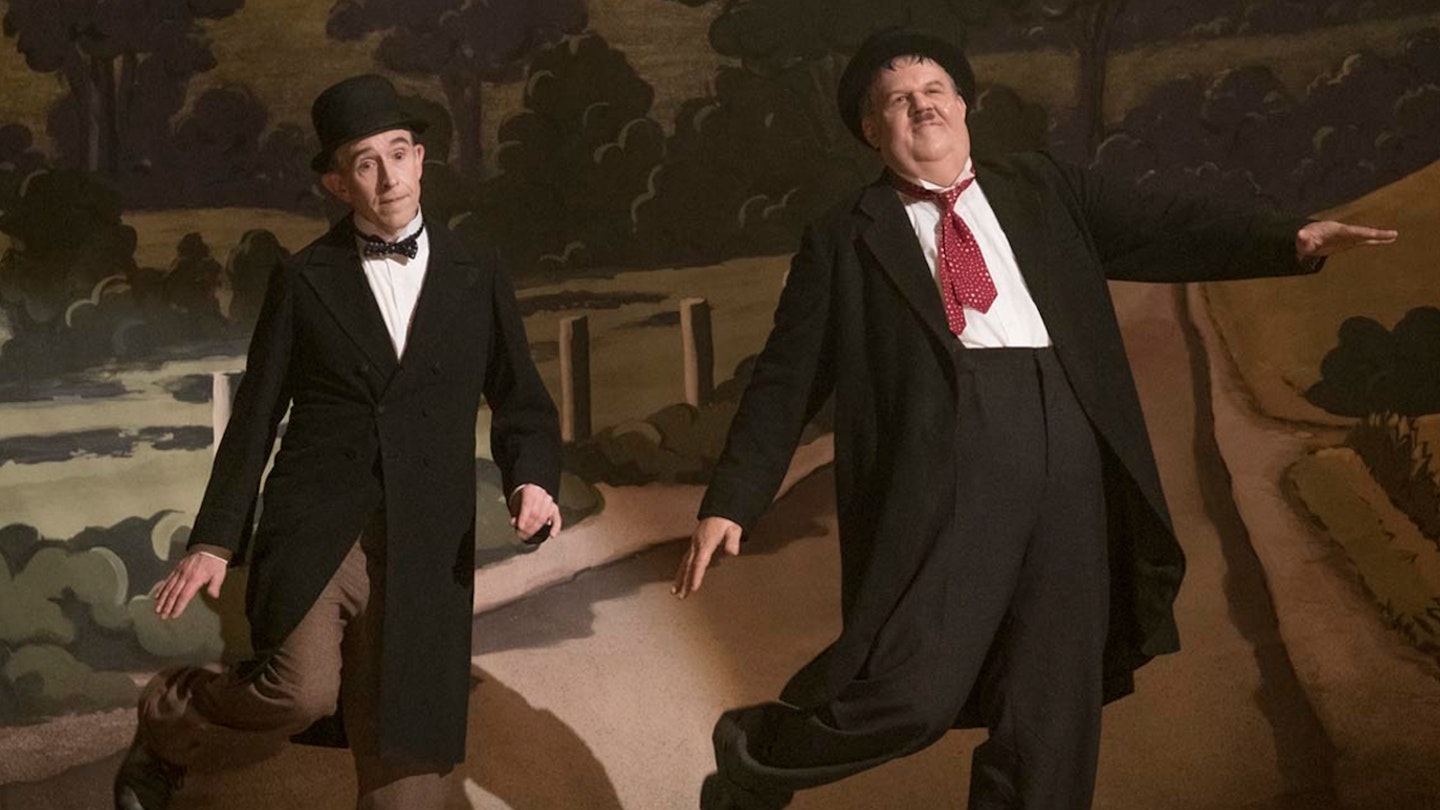
Stan & Ollie opens with the film’s first and last bit of show-off direction, a lengthy tracking shot that follows Stan Laurel (Steve Coogan) and Oliver Hardy (John C. Reilly) around a Hollywood backlot. Over several beautifully staged minutes it sets the dynamic between them: in 1937, they are cinematic kings, but they’re not getting the financial compensation they deserve. Hardy doesn’t like to make a fuss, even though his failed marriages are bankrupting him. Laurel, who develops the majority of the pair’s material, wants to take a stand against the studio. They debate as friendly business partners; Laurel has a confrontation with producer Hal Roach (Danny Huston). As soon as the cameras go on they snap into their beloved on-screen personas, running through their routine as if two parts of the same person. It’s a brilliant way of squeezing a lot of exposition into a few minutes.
Steve Coogan and John C. Reilly are a dream.
The story and the direction hit a softer groove as we jump to the 1950s. Laurel and Hardy have reunited after briefly going their separate ways and find themselves far from the spotlight, preparing for a tour of Britain’s smaller theatres while they wait to hear whether financing has been secured for their comeback movie. Hardy speaks of the film as a ‘when’; Laurel’s face says it’s very much an ‘if’. Jeff Pope’s script gives us two men whose partnership needs an audience to thrive. Alone they’re close but often businesslike, held back; with even a single pair of eyes on them they blossom into life, slipping into routines in the hope of raising a smile. Every audience from one to a million gets the same amount of effort.
The affection for the subjects is clear in every frame. Baird’s direction is warm and quietly stylish, but he lets his actors take all the attention. Coogan and Reilly are a dream. Onstage they get to do pitch-perfect impressions, but off they reveal other sides to the men. Laurel is the darker of the two, given to worry and the occasional outburst, while Hardy brushes gloom aside and tries to pretend tomorrow will always be rosy. In a splendid supporting casting, Nina Arianda steals her every scene as Laurel’s wife Ida, a hilariously rude woman with no internal monologue.
This is not a biopic that offers any great surprise or scandal, but one that celebrates, without beatifying, its subjects. It makes you want to rush off and re-watch, or discover, everything Laurel and Hardy did. It’s nearly 100 lovely minutes that will lead you to many more.
